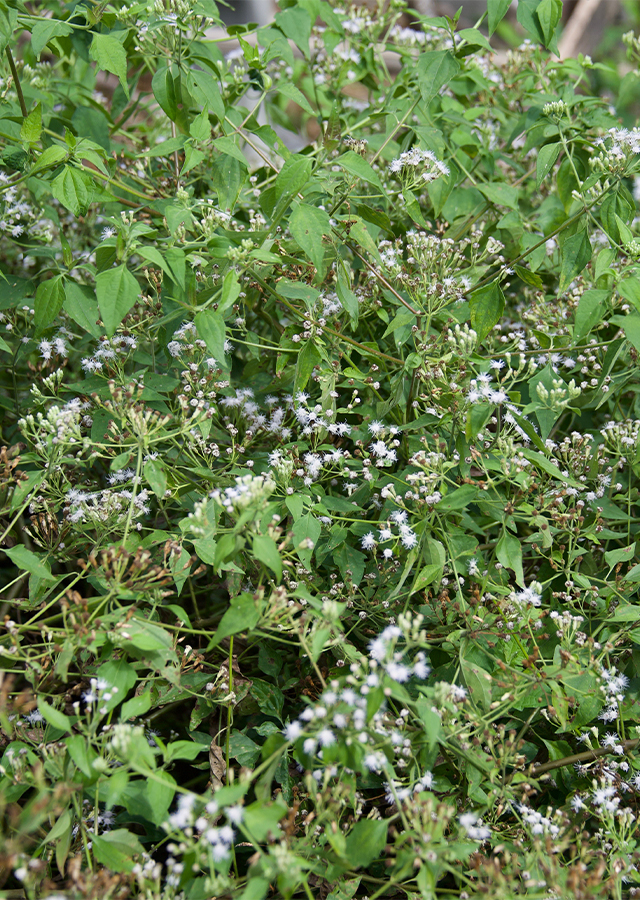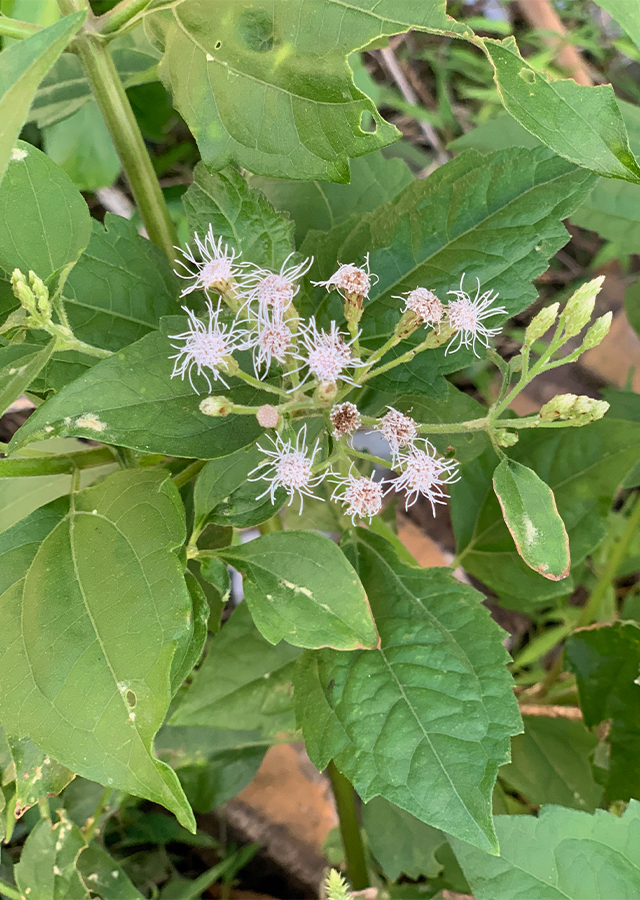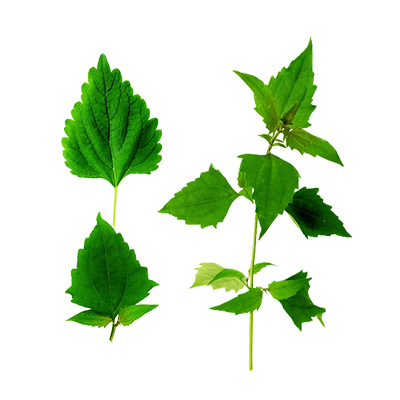Siam weed
Chromolaena odorata (L.) R.M. King & H. Rob.
Asteraceae
Location in our garden
Principal



Synonym
Chromolaena barranquillensis (Hieron.) R.M.King & H.Rob.
Chromolaena clematitis (DC.) Pruski
Chromolaena odorata f. squarrosa (Koster f.) Sunita Garg
Habitus
Shrubs. A perennial plant with more or less woody stems, grow up to 3 m high
Part Used
Leaves
Flowers
The Whole Plant
Growing Requirements
Full Sunshine
Habitat
Riverbanks
Forest
Coastal
Shrublands
Grassland
Overview
Siam weed is often noted as a native of tropical Central and South America, from Mexico and the Caribbean to Brazil. It was introduced to tropical Asia, west Africa, and Australia. A very widely distributed tropical shrub that is still expanding its range and has become one of the most invasive weeds in Asia and Africa.
Vernacular Names
Rumput putih, Kirinyuh (Indonesia), Chimuyo (Spanish), Eupatoire odorante (French), Varejón de caballo (Colombian), Fei ji cao (Chinese), Co hoi (Vietnamese), Hagonoy (Tagalog-Philippines)
Agroecology
A plant of the warm and humid tropics and subtropics, where it is found at elevations up to 1,000 metres, in open secondary habitats such as cultivated lands, abandoned or neglected fields, forest clearings, wastelands, along forest trails, fence rows, roadsides and forest margins. It grows
best in areas where annual daytime temperatures are within the range 20-35 °C. It can be killed by temperatures of -1 °C or lower. It prefers a mean
annual rainfall in the range 2,000-4,000 mm, but tolerates 1,500-5,000 mm. It requires a sunny position. Succeeds in many soil types, but prefers well-drained soils. Prefers a pH in the range 5-6.5, tolerating 4-7.5
Morphology
- Stems - terete, long rambling branches, base of the plant is hard and woody while the branch tips are soft and green
- Leaves - arrowhead-shaped, 5 to 12 cm long and 3 to 7 cm wide, with three characteristic veins in a pitchfork pattern, growing in opposite pairs
- along stems and branches.
- Flowers - in clusters of 10 to 15, tubular, pale pink-mauve or white, 10 mm long, at the end of the branches.
- Seeds - dark, 4 to 5 mm, narrow and oblong, with a parachute of white hairs which turn brown as the seeds dry
Cultivation
- By seed - it requires light to germinate and is best sown very near the surface, but it may still emerge when buried up to 3 cm deep. Emergence takes 4-12 days.
- By cuttings - the nodes of branches readily root when in contact with moist soil, and root cuttings
Chemical Constituents
- Tannins, phenol, alkaloids, flavonoids, saponins, steroids, essential oils (α-pinene, cadinene, limonene, β-caryupyhllene and candinol isomer camphora).
- Leaves also yielded alkaloids, flavonoids, saponins, cyanogenic glycosides, tannins, and phytic acid
Traditional Medicinal Uses
- Studies have suggested antimicrobial, wound healing, hemostatic, antioxidant, anti-inflammatory, wound healing, platelet protective, anticancer, hypoglycemic, hypolipidemic, anti-anemic properties.
- The leaves are antibiotic, antimalarial and febrifuge
- In Indonesia and Vietnam, the leaves are used for the treatment of soft tissue wounds, burn wounds, and skin infections.
- In the Antilles, juices extracted from pounded leaves, mixed with honey, castor oil, and olive oil, are used for colds and flu.
- In the Philippines, crushed leaves is used for "kulebra" (painful skin condition that easily affects people who have low immune system), boils and tumorous inflammatory conditions.
- An infusion of the leaves is taken to cleanse the blood
Part Used
Reference Sources
- CABI. (2007). Invasive Species Compendium: Chromolaena odorata( Siam weed). https://www.cabi.org/isc/datasheet/23248. (Accessed 02-03-2021).
- Fern, Ken. (2014). Useful Tropical Plants: Chromolaena odorata. http://tropical.theferns.info/viewtropical.php?id=Chromolaena+odorata. (Accessed 02-03-2021).
- Stuart Xchange. (2014). Philippine Medicinal Plants: HagonoyChromolaena odorata Linn. http://stuartxchange.org/Hagonoy (Accessed 02-03-2021).

